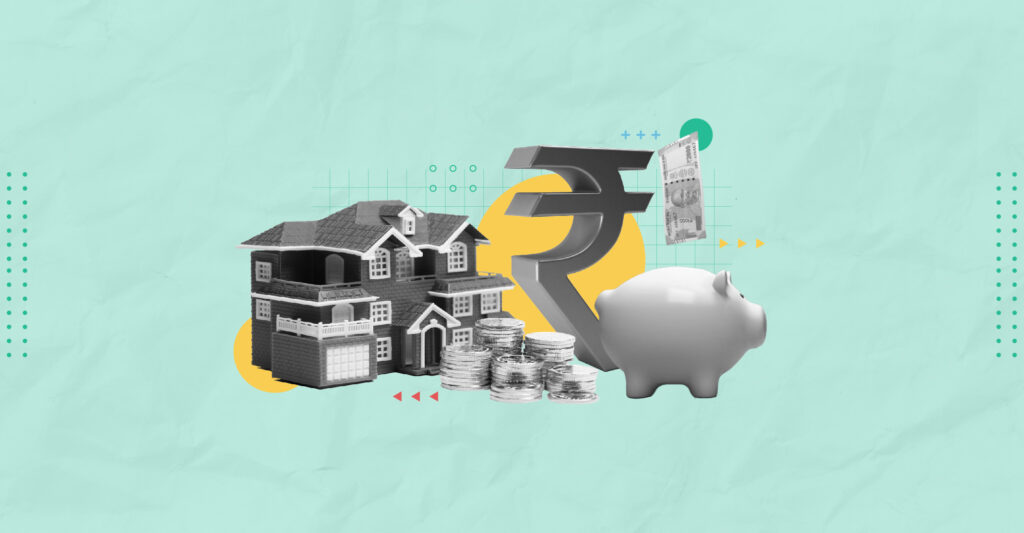Last Updated on May 25, 2022 by Neera Bhardwaj
Who doesn’t dream of buying a house? It is a long-term project based on a life-altering decision to assume responsibility for one’s own life. The craze of buying houses or properties has always existed in India. Most parents attach an emotional connection to purchasing a home. It is one highlight of a lifetime. However, living in a rented apartment is not considered the “ideal” stay and often brings along some frowned faces.
However, buying properties blinds us to the extent that most view it as a great investment option. People also tend to believe that buying is the same as investing. This line of thought may become a little problematic sometimes.
A problem for most buyers in India is that the country has an expensive real estate sector. Thus home loans become the most viable option for these buyers to secure their purchase. But unfortunately, these loans eventually tie a buyer into the endless web of EMIs.
Now, if you pay this amount every month for 25 yrs, you will pay Rs 62,182,04, which is double what you had initially taken! This is because the interest amount gets added to the principal amount. Here, the total interest will amount to Rs 32,18,204.
With EMIs, there’s hardly ever any chance of saving money. Instead, all the cash seems to flow out in a stream every single month. But there’s a trick that you may use to recover your money from the interest on the housing loan!
Open your doors to SIPs.
Table of Contents
What is a SIP?
SIPs or Systematic Investment Plan is an investment facility that helps you invest in mutual funds periodically in smaller amounts. The frequency of the deposits or the SIP intervals varies from weekly to monthly to annually. SIPs allow you to spread out your investment amount instead of paying a significant amount altogether. When you invest in a mutual fund scheme through SIPs, you buy fund units proportionate to the amount you invested.
Benefits of SIPs
Investing in SIPs for the long term can benefit through the compounding effect. The compounding effect makes sure that you earn returns on your principal amount and the gains earned on this principal amount. It turns into a snowball effect, and your money grows. SIPs don’t let you worry about market trends. You need to pick a good mutual fund and let SIP take care of the rest. Another benefit of investing through SIPs is starting your journey with just Rs 500 per month. This amount can be increased with the increase in your income.
How does SIP help in a home loan?
SIPs can help you recover the interest amount in your home loan. For over 15 yrs, choosing SIPs has been essential to recover the interest amount.
Let us continue with the example mentioned in the beginning to illustrate this point:
So, according to the example given, on a home loan of Rs 30 lakh at an interest rate of 6.75% for 25 yrs, the total interest amounted to Rs 32,18,204, and the total amount paid was Rs 62,182,04. When this loan is sanctioned, immediately start a SIP in a mutual fund of your choice. Let’s say you decide on a monthly SIP of Rs 2,000 in a mutual fund, which is 10% of your EMI amount. People can also start their SIP with just 0.15% of the principal loan amount. Now, you let this SIP continue for 25 yrs. If we assume a modest return of 15% p.a, then in 25 yrs, you would have invested Rs 6 lakh. However, the total corpus that is collected is Rs 65.7 lakh. Thus, while you give the Rs 62 lakh to the bank, you earn more than you give through SIPs. Your net loss becomes zero in this case.
Just a little disciplined investment by keeping a small portion aside, and your EMI payments can gradually bring back the money lost in repayment.
One of the common mistakes that people tend to make is to prepay the EMI loan as they tire of carrying the enormous debt on their shoulders. However, the slow and steady wins the race always. One needs to consider several factors before thinking about prepaying the loan. These include the availability of an emergency fund, the interest rate (the higher the rate, the slower you should pay), additional tax benefits you may avail, among others.
Another critical aspect of investing in SIPs is the returns. If you try to pay off early, you may miss out on the returns that you can receive through SIPs. SIPs are naturally subjected to market risks, but they can be a safe investment if done for a longer time. For example, for an investment of 1 yr, the return may vary from -50% to +50%. However, if the investment period is over 15 yrs, the return rates can range from 2 to 17%. Hence, safety can only be assured through long-term investment.
SIP helps in inculcating the habit of personal financing and saving. It allows you to build a controlled financial life. By placing your money at different levels in the market, SIP can help you create an excellent long-term goal. However, before getting a home loan or starting a SIP, one must always ensure that they have an emergency fund to cover at least a minimum of one year’s expenses. In addition, life and health insurance are also a must. After completing these goals, you should try applying for a home loan and simultaneously invest in SIP to recover the interest.
- Top Large Cap Funds 2025: Discover Blue Chip Performers - Mar 27, 2025
- Gilt Funds in India: Features, Meaning, and Advantages - Mar 13, 2025
- Best Index Funds in India 2025: Top Performing Mutual Funds - Mar 13, 2025




